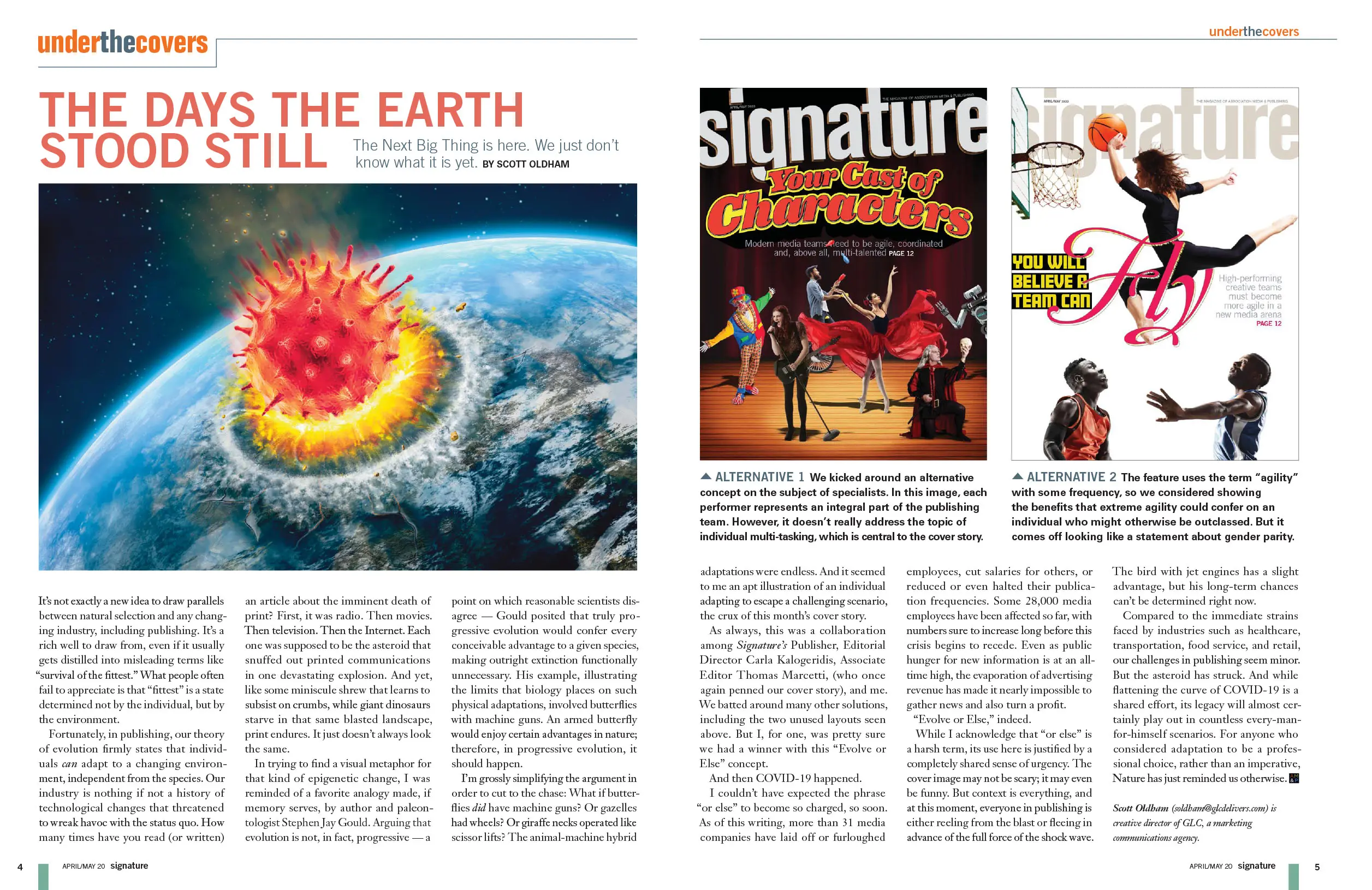What Makes a Good Agency Relationship?

Working with an agency can bring efficiency to many time-intensive production processes—especially for organizations that want to free up their staff for more strategic work. But sometimes pure efficiency sacrifices quality and innovation. This is something Carla Kalogeridis, editorial director of Signature magazine, the official publication of Association Media & Publishing (AM&P)/Connectiv, knows well.
AM&P is an organization dedicated to the needs of print and digital publishers at nonprofits, trade associations and alumni organizations, primarily focused on business operations executives, communication professionals, designers, editors and content creators, as well as the media they create.
After an extensive RFP process, Kalogeridis and her team chose GLC to design the covers and cover stories for Signature, as well as write and design a department of the magazine, “Under the Covers,” each issue. The February/March 2020 issue of the magazine recently won gold in The Content Council’s Pearl Awards competition for best cover. GLC will also be redesigning the entire magazine for 2021.
Recently, Kalogeridis sat down with GLC to talk about what makes a creative agency relationship successful and why she values honesty over egos in the creative process.
GLC: Can you describe your creative dynamic with GLC? What’s your process for jointly creating Signature magazine?
CK: What I like about working with GLC is that we all operate as a team of equals. From the beginning, we were very clear with each other that GLC was free to criticize text and words that might come from us, and we were free to push back on design elements. It is not a client relationship where a designer is trying to tap dance around a couple of editors who have some ideas in their head. We’ve got six issues under our belt now, and I would say that it has worked well. There has been pushback from both sides on all elements, and we all are better for it.
GLC: What does that push back and forth look like in practice? Can you take us behind the scenes of one of those issues?
CK: We have a department in Signature called “Under the Covers,” which talks about the making of each issue’s cover. In the April/May 2020 issue, there was an image in the “Under the Covers” article that showed an asteroid slamming into the Earth, and the asteroid looked like a coronavirus particle. Initially when I looked at it, I thought, people are hearing so much doom and gloom, do we really want to look like COVID is destroying planet Earth? I asked GLC to just pick something else, and our art director explained that the image selection was intentional.
Still, I had some concerns, so I had our associate editor, Thomas Marcetti, weigh in, and he actually disagreed with me. He thought it was relevant to the content, which was about associations and publishing teams of the future. Like COVID, this challenge of planning for the future has kind of slammed into everybody, and nobody could really be prepared for all of the ramifications. I still wasn’t convinced, so I asked GLC to share the image internally and get more feedback.
GLC’s creative director, Scott Oldham, sent me an email summarizing the response, and I was in the minority; everyone agreed that it was a fine image. I had the final decision-making power, but I was in the minority, and I was really grateful that GLC felt so confident in our relationship that they put the magazine first, rather than worrying about making me happy. That’s what I love about working with GLC. I know we’re going for the best content we can, above any other kind of political or relationship concerns that may traditionally influence the work.
GLC: I think anyone working on creative projects can relate to that tension between safe, just-okay work and great work that pushes boundaries.
CK: Yeah, it really inhibits a lot of great design, and I can’t tell you how many times I’ve seen magazines go to press that have missed the mark because a designer was forced to manipulate their work to appease a board of directors or an editor or something like that.
I couldn’t design a magazine, but if you show me something, I can tell you what I think is working and what’s not. When we make a suggestion to try one thing or another, I love that GLC always says yes. Even if it may not work, we get to see it executed. Sometimes it comes out better than our art director thought it would, and he says, “I’m glad you asked me to try that.” Other times he’ll say, “I tried this, but I’m not sure it works because of A, B and C.” It’s super honest, which has been really refreshing.
GLC: What do you think has been the most important element to the success of your work with GLC?
CK: The most important thing is how we set the tone from Day One that we were going to blur the lines. It wasn’t going to be an editor-versus-designer relationship or a customer-versus-agency relationship. I think it’s really hard for people to do that. People can get defensive of their vision and their concepts. It can be like the horse that became a camel: They say that a camel is a horse designed by committee. All of us have the magazine and the members as our first priority—not any of our individual egos.
Do you have a story about a good agency relationship? We’d love to hear about it in the comments below.


